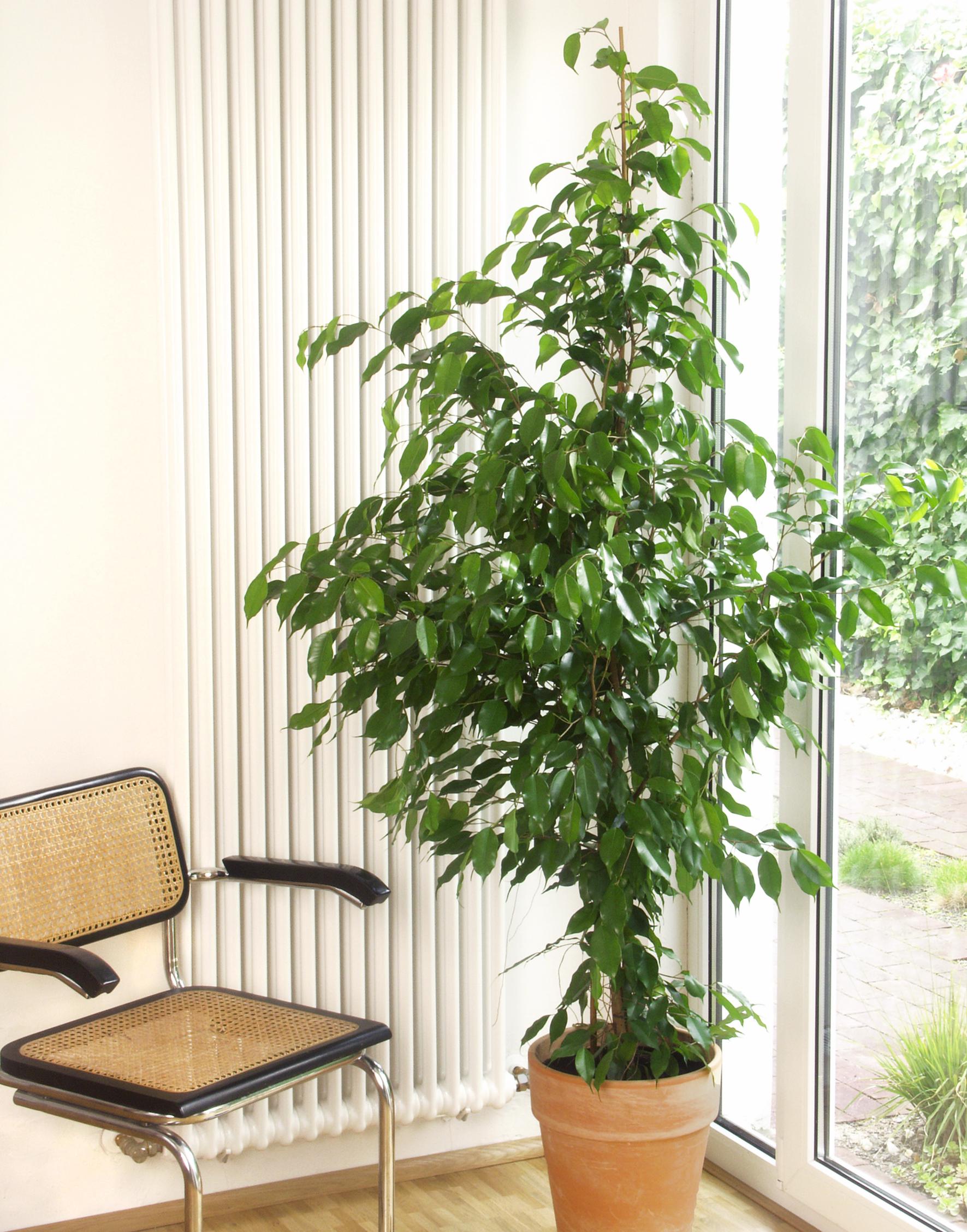
Weeping fig brings lush greenery into your home—get our tips on how to grow and care for it
Weeping fig can quickly grow up to the ceiling if you know a few care tricks. This relatively easy-care, striking plant brings much-needed greenery into your home.
Weeping fig (Ficus benjamina) grows wild in northern Australia as well as in South and Southeast Asia. Its natural habitat indicates that weeping fig needs warm conditions and plenty of light all year. Even so, it’s relatively easy to care for and does fine with minimal attention.
Weeping fig: growing and care
Suitable temperature
Weeping fig grows well year-round at normal room temperature. In winter, when light is limited, it appreciates slightly cooler conditions. About 18°C is ideal, provided the temperature doesn’t dip below 15°C.
You can safely move weeping fig outside for the summer as long as nighttime temperatures don’t drop too low.
Light conditions
Weeping fig does well in a bright spot, typically near south- or west-facing windows. However, it doesn’t like direct, harsh sunlight, so a sheer curtain or placing it a bit farther from the window can help it thrive.
If you try growing weeping fig in lower light, it may drop some leaves. In the best scenario, it adapts to the shadier spot and grows new leaves in place of the dropped ones. Generally, though, it doesn’t do well in very dark spaces or far from a window, especially in winter.
Weeping fig watering and fertilizing
Weeping fig needs plenty of water, but its roots shouldn’t stay constantly wet. Water it thoroughly each time so the soil is fully soaked, then allow the soil to dry a bit before the next watering.
During the growing season, from March to September, add fertilizer to the water every week. In winter, you can fertilize about once a month when you water.

Other care for weeping fig
Weeping fig prefers high humidity. In winter, help it by misting the plant each time you water. It also benefits from an occasional thorough shower to rinse away dust. This allows the leaves to photosynthesize more effectively.
Along with inadequate light, dry indoor air can stress the plant in winter. Tiny red spider mites may appear, weaving thin webs on the leaves and stems. If you notice mites or webbing, act promptly. First, rinse the plant thoroughly to wash pests from the undersides of the leaves. Then use a product effective against spider mites—ask your garden center for a suitable option. Follow the instructions carefully and repeat the treatment as needed. Keep your weeping fig away from other houseplants so the mites don’t spread.
If the plant drops many leaves in winter, don’t panic. Keep caring for it and misting its leaves with water. By spring, it usually grows new ones.
If you want to shape your weeping fig by pruning, spring is the ideal time to do it.
Repotting weeping fig
Weeping fig doesn’t need a large pot and actually prefers a snug container. Only repot it when the pot is packed with roots. If you use a porous clay pot, remember you’ll need to water more often because moisture evaporates through the clay. A glazed clay pot retains moisture better. With a plastic pot, less watering is needed since plastic isn’t porous. Self-watering pots are also a good option.
Choose a light, airy potting mix that maintains its structure and drains well. A long-lasting potting mix works well for weeping fig.
If you’re planting your weeping fig in a regular clay or plastic pot, put some pebbles or clay granules at the bottom for drainage. Then add soil and position the plant so there’s room at the top for watering. If you’re using a self-watering pot, skip the drainage layer.
Propagating weeping fig
Weeping fig can be propagated from tip cuttings. Take about ten centimeters from the tip of a branch. Remove any leaves from the portion that will be in the soil. Dip the cut end in rooting hormone (available at garden centers) and place it in moist soil. Cover it with a clear plastic bag that has a few air holes, and keep the soil evenly moist. When you notice new leaves, the cutting has successfully rooted.
Rooting is also possible without rooting hormone. You can try placing the cuttings in a glass of water so the base stays submerged.
Remember this!
Weeping fig is not suitable for people with asthma or allergies. The milky sap that seeps from a pruned stem can also irritate skin, so it’s best to wear rubber gloves when trimming. Read more about low-allergen houseplants. [in Finnish]

The most common problems with weeping fig
Why did my variegated weeping fig turn solid green?
In nature, many plant species naturally have variegated leaves that are passed on to all offspring. Additionally, many plants experience spontaneous mutations where green-leafed varieties suddenly develop different levels of variegation.
Typically, this kind of mutation results in chlorophyll loss in parts of the leaf, creating white variegation. This can happen during pollination, which means a plant grown from seed will be variegated from the start.
A mutation can also occur in the shoot tip, where new leaves and stems form. Only the parts that emerge after the mutation are variegated, while older leaves stay green.
The mutation can go the other way as well, meaning a variegated plant can suddenly start producing solid green leaves. The original variegated weeping fig arose from a mutation in the shoot tip of a green-leafed plant. When a reverse mutation occurs in the shoot tip of one branch, it will grow the solid green leaves typical of the species.
What are the brown spots on the undersides of my weeping fig’s leaves?
Small, hard bumps on the undersides of the leaves are soft scales. They’re difficult to eliminate because they attach themselves to the plant to suck its sap and secrete a thick wax layer that blocks most insecticides.
The best way to remove them is by picking them off one at a time with a toothpick or similar tool. If multiple soft scales are on a single leaf, it can be easier to remove the entire leaf.
After you’ve removed all the insects, spray the entire plant with a product designed for soft scale control. Then repeat every couple of weeks at least twice, preferably three times. This is necessary because the plant may still contain soft scale larvae too small to see, and insecticides won’t affect eggs, which will hatch later.
Getting rid of soft scales for good can be challenging. Sometimes discarding the plant is the best option, especially if it’s heavily infested. That’s the only way to keep soft scales from spreading to your other plants.


